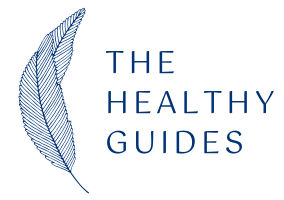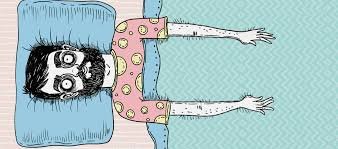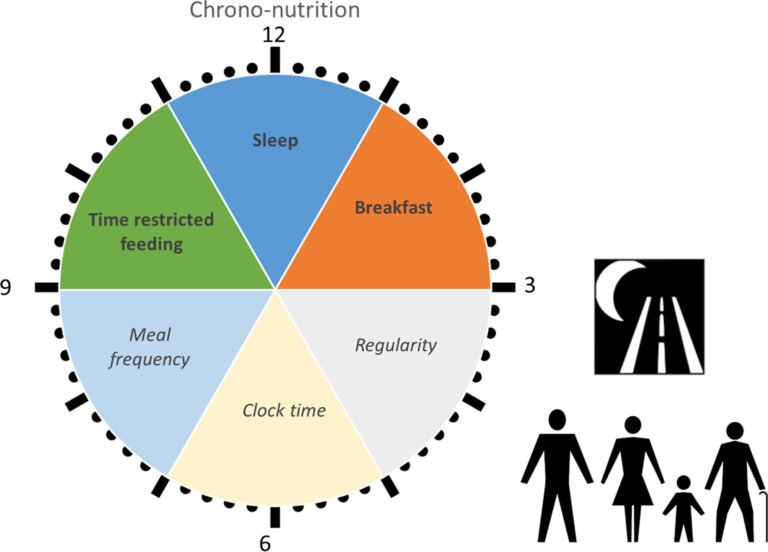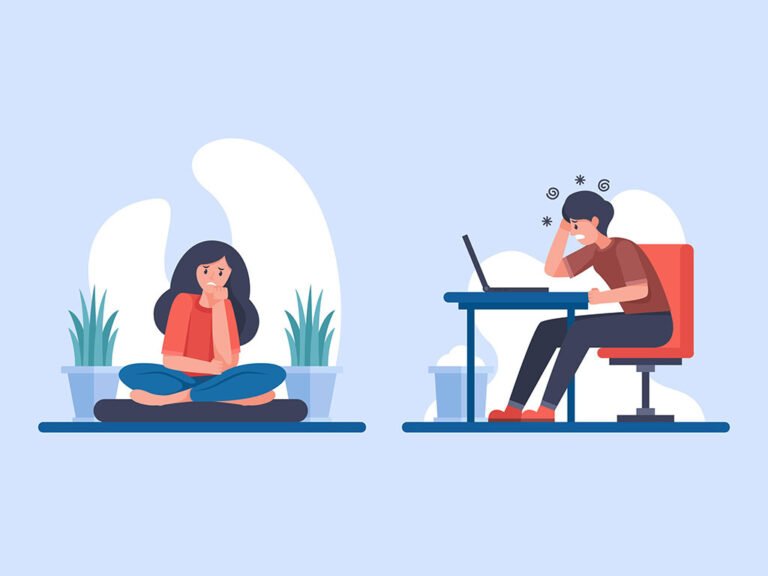Personalised Sleep Routines are changing the way we think about rest. Sleep used to be something we did automatically — lie down, close your eyes, and wake up when the alarm screamed. Today, we know better. Sleep isn’t passive downtime; it’s an active process of repair, memory consolidation, and hormonal reset. Yet, modern lifestyles — screens, stress, caffeine, and late-night work — have made natural, high-quality sleep harder to achieve.
That’s where personalized sleep routines, wearable technology, and optimization strategies come in. Sleep can be trained, measured, and customized, just like fitness or nutrition. This guide will walk you through everything: from designing your own routine to decoding Oura Ring data, comparing wearables, and creating wind-down habits that actually stick.
Part I: Personalized Sleep Routines
Build a Personalized Sleep Schedule for Your Chronotype
Your chronotype is your biological preference for waking and sleeping. Some thrive at dawn; others peak at midnight. This is why Personalised Sleep Routines are so important — forcing yourself into the “wrong” schedule can leave you dragging through the day, no matter how many hours you log.
- Morning Larks: Perform best with early bedtimes and sunlit mornings.
- Night Owls: More creative and alert in the evening; should avoid forcing a 5 a.m. wake-up.
- In-Betweeners: Flexible, but still need consistent bed/wake times to avoid drifting.
Pro tip: Try to align major tasks (workouts, focus work, creative projects) with your chronotype’s peak hours.
Why You Wake Up Tired After 8 Hours of Sleep
It’s one of life’s cruel jokes: you get a full 8 hours, but still feel groggy. Why?
- Sleep Cycles: If your alarm wakes you in deep sleep, you’ll feel sluggish.
- Sleep Quality: Fragmentation from stress, alcohol, or environment may reduce restorative phases.
- Circadian Mismatch: Sleeping at biologically wrong hours (night shifts, late bedtimes) undermines restfulness.
Solution: Focus on sleep efficiency and timing, not just total duration.
The Shift Worker’s Guide to a Personalized Sleep Routine
Shift workers live with circadian whiplash. But there are ways to minimize the damage:
- Use blackout curtains or sleep masks to mimic nighttime.
- Create strict pre-sleep rituals to train your body into rest, even at odd hours.
- Leverage short naps to fill gaps.
- Consider melatonin under medical guidance for schedule resets.
The Ultimate Wind-Down Routine for Better Sleep
Consistency is everything. Personalised Sleep Routines often include a solid wind-down ritual that signals to your brain it’s time to power down. Here’s a proven sequence:
- Digital Sunset: Turn off bright screens 1–2 hours before bed.
- Movement Cool-Down: Gentle yoga or stretching.
- Breathwork or Meditation: 10 minutes of calm focus.
- Sensory Cues: Dim lights, lavender diffuser, or soft music.
- Bedtime Snack (Optional): Almonds, chamomile tea, or kiwi for natural sleep support.
Part II: Wearables & Sleep
Best Sleep Tracker for Insomnia (2024 Guide)
If you’re struggling with insomnia, tracking can help reveal hidden patterns. Here are the standouts:
- Oura Ring (Gen 3): Accurate recovery insights, discreet form.
- Whoop 4.0: Excellent HRV and recovery tracking.
- Fitbit Sense 2: Affordable with stress tracking integration.
- Apple Watch Series 9: Best for all-around health data and app integration.
Tip: Don’t obsess over nightly fluctuations. Look for trends over weeks instead.
How to Understand Your Oura Ring Sleep Data
Oura Ring gives you a Sleep Score based on:
- Total Sleep
- Efficiency (time asleep vs. in bed)
- Restfulness (tossing/turning)
- REM & Deep Sleep
- Latency (time to fall asleep)
- Timing (circadian alignment)
The key is not chasing a perfect 100 but noticing patterns. Example: consistent dips in deep sleep after alcohol → proof to cut late drinks.
Apple Watch vs. Fitbit vs. Oura Ring: Sleep Accuracy Compared
- Oura Ring: Best at overall sleep staging and recovery metrics.
- Apple Watch: Good for integration with Apple Health; accuracy improving but not best-in-class.
- Fitbit: Affordable, user-friendly, and reliable for broad trends.
Verdict: For serious sleep tracking, Oura wins. For all-in-one health, Apple Watch. For budget-friendly reliability, Fitbit.
How to Use Wearable Data to Fix Your Sleep Schedule
Here’s how to turn data into action:
- Identify what nights deliver your best sleep score.
- Track lifestyle factors (exercise timing, caffeine, late meals).
- Run experiments: Shift workouts earlier? Try no screens?
- Adjust bedtime until sleep efficiency improves.
Remember: Wearables give clues, not commandments. Pair data with how you feel.
Part III: Optimize Your Night
How to Increase Deep Sleep Naturally
Deep sleep is when your body repairs tissue, strengthens the immune system, and consolidates learning. To boost it:
- Cool Environment: 60–67°F triggers deeper sleep.
- Exercise: Regular, but not too close to bedtime.
- Alcohol Reduction: Fewer nightcaps = more restorative stages.
- Magnesium: Supports relaxation (consult your doctor first).
- Consistent Schedule: Deep sleep thrives on rhythm.
Best Time to Wake Up: Calculate Your Perfect Schedule
Your ideal wake-up depends on 90-minute sleep cycles. Waking mid-cycle → grogginess. Waking at cycle end → refreshed.
Steps to calculate:
- Count back 7.5 hours (5 cycles) from desired wake-up.
- Add a 15–30 min buffer for sleep onset.
- Experiment with cycle timing until mornings feel easier.
Pro tip: Apps like Sleep Cycle or your wearable’s “smart alarm” can wake you at the lightest phase.
Beyond Sleep: Why Optimization Matters
Improved sleep isn’t just about not being tired. Benefits ripple across every domain:
- Cognitive Performance: Faster learning, sharper focus.
- Emotional Regulation: Less irritability, more resilience.
- Physical Recovery: Better workout gains, immune defense.
- Metabolic Health: Balanced hormones and appetite.
Sleep optimization creates an energy surplus you can reinvest into work, relationships, and passions.
Conclusion: Sleep as a Skill You Can Master
In the past, sleep was treated as something automatic — now we know it’s a skill. Personalised Sleep Routines help you sync with your chronotype, while wearables provide insights and structured optimization guides refine your rest even further.
Whether you’re decoding Oura Ring data, testing Apple Watch against Fitbit, or perfecting your wind-down ritual, the key is this: consistency beats perfection. Track, tweak, repeat.
Sleep is no longer an afterthought — it’s the foundation of thriving days. With the right strategies, you won’t just sleep; you’ll optimize your night and own your mornings.
FAQs on Personalized Sleep Routines
1. How can I increase my deep sleep naturally?
You can improve deep sleep by keeping your bedroom cool (60–67°F), exercising regularly but not too close to bedtime, reducing alcohol, and following a consistent sleep schedule. Building Personalised Sleep Routines that include magnesium-rich foods and stress management practices like meditation can also make a big difference.
2. What’s the best sleep tracker for insomnia in 2024?
The Oura Ring Gen 3 is excellent for detailed sleep staging, while Whoop 4.0 shines in recovery insights. If you want budget-friendly tracking, Fitbit Sense 2 is reliable. For all-around health monitoring, the Apple Watch Series 9 is a strong choice.
3. Why do I still wake up tired after 8 hours of sleep?
This can happen if you wake during deep sleep, if your sleep is fragmented, or if your sleep schedule doesn’t align with your circadian rhythm. Quality and timing matter just as much as total duration.
4. How do I build a sleep schedule for my chronotype?
- Morning larks should schedule key tasks in the morning and aim for early bedtimes.
- Night owls should accept later creative bursts but avoid extremely late nights.
- In-betweeners can flex either way but must stay consistent with bedtime cues.
5. How accurate are wearable sleep trackers?
Wearables like Oura, Fitbit, and Apple Watch aren’t as accurate as lab polysomnography, but they provide helpful trends. They’re great for seeing patterns (like how caffeine or workouts affect your sleep) rather than exact minute-by-minute staging.
6. Which is better: Oura Ring, Apple Watch, or Fitbit for sleep tracking?
- Oura Ring: Best for sleep and recovery.
- Apple Watch: Best all-rounder with health integrations.
- Fitbit: Affordable, reliable, and user-friendly.
7. How can I use wearable data to fix my sleep schedule?
Look at your weekly trends instead of obsessing over nightly scores. Experiment with adjusting workout timing, caffeine cutoffs, or bedtime, and see how your sleep efficiency and deep sleep respond.
8. What’s the best wind-down routine before bed?
The most effective routine includes turning off screens 1–2 hours before bed, light stretching, meditation or journaling, dimmed lighting, and calming sensory cues (lavender, soft music, or white noise).
9. How do I calculate the best time to wake up?
Work backward from your desired wake-up time in 90-minute cycles (each cycle = light → deep → REM). Aim for 5 cycles (7.5 hours) plus 15–30 minutes to fall asleep. Apps and smart alarms can also help wake you at the lightest stage.
10. Can shift workers create a healthy sleep routine?
Yes, though it’s harder. Use blackout curtains to simulate nighttime, keep rituals consistent, nap strategically, and use light exposure (or melatonin under guidance) to adjust your circadian rhythm.
“Looking for more ideas like these? Explore our full diet category for tips, guides, and meal inspiration.”
For more tips and support, visit our Facebook page.







